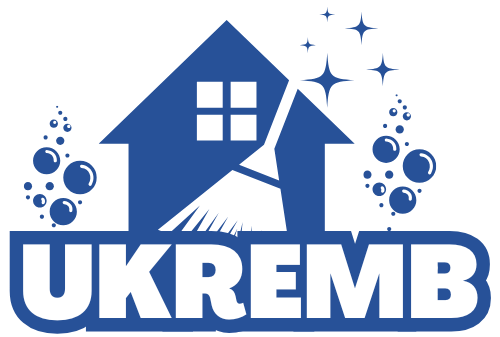Senior leadership looks very different today compared to what executives were dealing with even five or six years ago. The shift did not arrive politely.
It came with constant product cycles, rising automation, new data layers, and a steady stream of digital tools that often feel like they rewrite the operating manual every quarter.
Leaders who built their careers on strategic instinct now feel pulled into a world driven by dashboards, systems, and platforms that refuse to slow down.
The result is simple. Every senior role is bending around technology pressure.
Some leaders adapt quickly. Others feel overwhelmed by the pace. And many sit somewhere in the middle, trying to keep their footing while the ground keeps moving.
The next sections break down what is really happening inside executive teams once technology pressure becomes the center of decision-making.
The Shift Leaders Feel Every Day

Senior leaders rarely describe technology pressure as one clean problem. They usually talk about it the way someone talks about background noise that never shuts off.
It creeps into hiring plans, budget cycles, customer experience work, operational decisions, and long-term strategy.
Several forces show up again and again:
- Constant software updates that demand quick pivots
- Data streams that produce more information than teams can absorb
- Rising customer expectations shaped by tech-driven industries
- Automation that pushes leaders to redesign roles, not just refine them
- Competitive pressure from companies with stronger digital maturity
If you sit in a senior seat, those forces combine into a rhythm where every choice carries a technology dimension.
Many executives say the patterns they see every week line up closely with what the Ned Capital Blog tracks in its leadership analyses.
Where Technology Pressure Hits Leadership Most
| Area | What Leaders Feel |
| Talent management | Skills gap, fast upskilling cycles, new hybrid roles |
| Finance and budgeting | Rapid tool adoption, cost creep from tech subscriptions |
| Operations | Automation pressure and workflow redesign |
| Customer strategy | Higher expectations shaped by digital-first brands |
| Risk and security | Growing exposure due to more tools and integrations |
A senior leader who does not want technology to shape their agenda still ends up shaped by it. The pressure sneaks into nearly every decision.
The Rise of Hybrid Executive Roles

One of the quietest shifts in leadership circles is how many executives now operate in hybrid positions. The title may stay the same, but the work moves toward digital fluency.
Chief marketing officers run analytics reviews. Chief operating officers rely on automation tools to hit efficiency targets.
Chief financial officers monitor subscription creep and model software investments. Chief people officers evaluate AI skills, not just traditional talent competencies.
None of that came out of nowhere. It grew slowly as technology matured and settled into every corner of the business.
Common Hybrid Patterns
Executives describe the shift in slightly different ways, but the patterns line up across industries.
- Strategy roles now include data interpretation
- Operational roles mix process work with digital tooling
- Financial roles evaluate enterprise platforms, not only budgets
- HR roles carry responsibility for tech training and digital readiness
A leader who once focused mainly on people or operations now becomes a translator between business needs and the tools meant to support them.
Decision-Making Changes When Tech Moves Faster Than Humans
Executives frequently admit a shared challenge. Technology moves far quicker than the decision-making processes they built over their careers.
A platform evolves in twelve months. Hiring cycles for tech talent take longer. Budget reviews take even longer. And cultural adoption inside teams can take years.
That gap puts leaders in a spot where they make decisions with incomplete information. They rarely wait for the perfect data set. They move with what they have, adjust later, and hope the timing aligns with market pressure.
Why Decision Making Feels Heavier
Senior leaders often cite several reasons for decision fatigue tied to technology pressure.
- Information overload from dashboards and data platforms
- Fear of choosing a tool that becomes obsolete too quickly
- Internal resistance from teams who are tired of constant change
- Higher stakes when tech decisions impact multiple departments
The mental weight comes from the speed of change combined with the ripple effect each choice creates.
New Leadership Traits Gaining Value

Traditional leadership traits still matter, but they no longer carry the full load. Experience, strategy instincts, and communication skills sit next to traits that used to be secondary.
Skills That Rise in Value
A few traits show up in almost every executive coaching program now.
- Tech literacy at a practical level
- Comfort working with cross functional product teams
- Bias toward experimentation
- Ability to shift processes quickly without losing stability
- Confidence managing both AI driven insights and human judgment
A leader does not need to be a technologist. They need enough fluency to lead teams who rely on those tools every day.
Leadership Traits Before and After Technology Pressure
| Trait Category | Past Focus | Current Focus |
| Decision making | Long-term planning | Quick cycles with iterative adjustments |
| Talent leadership | Traditional hiring | Skills-oriented hiring aligned with digital needs |
| Operations | Process stability | Process adaptability with tech integration |
| Communication | Broad messaging | Clarity around digital change and adoption |
The growth in value lies less in technical skill and more in the confidence to guide teams through constant digital shifts.
How Senior Leaders Adapt in Real Time

Leaders generally fall into three adaptation styles. Each style comes with different results, and most executives bounce between them depending on pressure points.
1. The Builder
The builder leans into technology pressure. They reorganize teams, bring in product thinking, introduce agile cycles, and treat digital work as core leadership responsibility. Builders usually succeed because they accept that technology shapes the agenda.
Practical habits builders follow:
- Frequent cross-functional reviews
- Early adoption of new digital workflows
- Dedicated time for learning and experimentation
- Clear expectations for tech skills across departments
2. The Stabilizer
The stabilizer moves more slowly. They work to integrate technology without shaking the culture too much. They ask for pilots instead of full rollouts. They prefer gradual shifts and frequent check-ins with managers.
Practical habits stabilizers follow:
- Careful evaluation of new platforms
- Emphasis on training before implementation
- Strong focus on reducing disruption to teams
- Incremental workflow redesign
3. The Overwhelmed Leader

The overwhelmed leader tries to keep pace but ends up stuck in reactive mode. They approve tools under pressure, skip training cycles, and rely heavily on their teams to interpret data or manage integrations.
Practical signs a leader is overwhelmed:
- Repeated tool adoption without removing older systems
- Decisions driven by urgency rather than strategy
- Fatigue expressed by direct reports
- Lack of clarity around responsibilities for digital work
Senior leadership does not always reflect one style. Most leaders bounce between all three. The goal is to spend less time in the overwhelmed category and more time in the builder or stabilizer categories.
Practical Moves Leaders Can Make Right Now
Technology pressure will not ease. Leaders who want to stay balanced can take practical steps that reduce stress and increase clarity.
Build a Digital Baseline
Executives benefit from a personal baseline of tech fluency. They do not need advanced skills. They only need enough insight to challenge assumptions and ask stronger questions.
A baseline usually includes:
- Familiarity with the main tools the organization relies on
- Light exposure to AI platforms used internally
- Working knowledge of how data flows across departments
- Regular check-ins with product or engineering leaders
Create a Short Decision Framework

A quick framework helps reduce fatigue. Leaders use it as a guide, not a rigid rulebook.
Questions often included in a short framework:
- Does the tool solve a clear operational barrier
- Does it reduce manual workload in measurable ways
- Is the adoption cost justified by long-term value
- Are the teams ready to absorb the change
- Can older tools be retired once the new one is active
The framework improves decision quality by reducing noise around the choice.
Build a Tech-Oriented Talent Plan
Executives who ignore talent alignment pay for it later. Roles change fast. Job descriptions that made sense two years ago may feel outdated now.
Key elements of a talent plan:
- A clear map of skills tied to upcoming technology shifts
- Training cycles that match the pace of tool adoption
- Rewriting roles that now require hybrid responsibilities
- Hiring plans aligned with digital maturity goals
Talent alignment usually determines whether technology adoption succeeds or fails.
What Happens to Leadership Identity

Executives often say they feel like their role has expanded sideways. Technology pressure does not remove old responsibilities.
It simply adds more layers, more decisions, and more information. The identity shift shows up quietly.
Leaders become connectors between departments, translators between teams, and anchors during rapid change cycles.
The weight increases, but so does the influence. Those who adapt gain a clearer view of their organization and their market.
Final Thoughts
Senior leadership roles keep bending around technology pressure. The change is steady and rarely gentle, but it brings new opportunities for leaders who adjust their habits and build a healthier digital rhythm.
A leader who treats technology as part of their identity, not an obstacle, ends up stronger, more confident, and better prepared for the next round of change.

